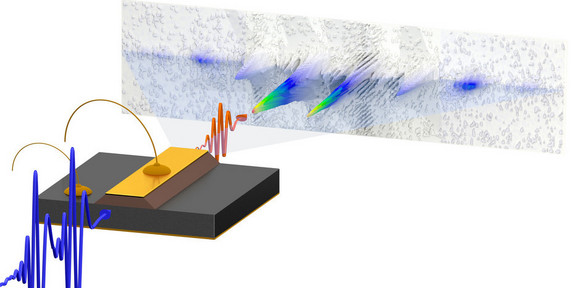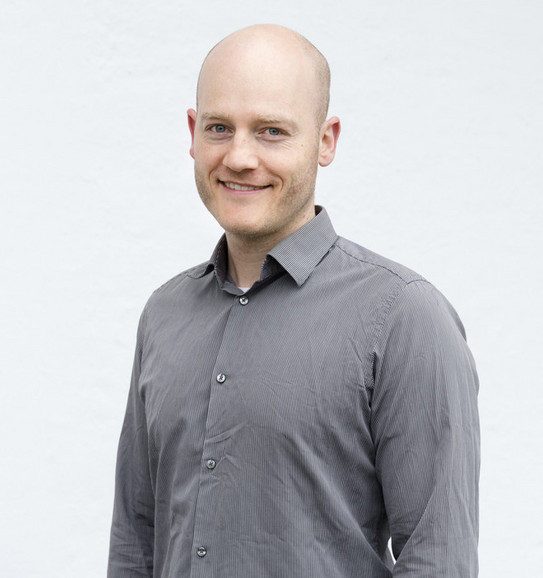Physicists investigate the non-linearities of a laser
- News
- Research

It is impossible to imagine the world of music without the diverse timbres of different instruments. Without them, music would seem linear and faceless - a simple piano and a high-quality Steinway grand piano would sound exactly the same. Fortunately, the sound of a tone is not only defined by its fundamental frequency, but by a mixture of fundamental, overtones and noise components. It is the art of the instrument maker to tune these harmonics to produce a high-quality, rich-sounding instrument.
Non-linearities also play a central role in modern quantum optics. With the help of non-linear media, ultra-short light pulses - spanning several optical octaves - can be generated. High-intensity laser sources can also be used to generate light in nonlinear processes with frequencies that are otherwise difficult to access, such as those in the terahertz (THz) spectral range. This part of the electromagnetic spectrum holds enormous potential for a variety of future technologies, as it forms a bridge between electronic and optical frequencies. First commercial applications of this rapidly growing field range from scanners at airports and modern mobile phone generations to ultra-fast communication in the field of lightwave electronics.
Efficient generation of THz radiation outside research laboratories is made possible by "quantum cascade lasers" (QCL). These lasers consist of wafer-thin layers of different semiconductor materials that generate an electrical potential that changes on the length scale of only a millionth of a millimetre. For electrons driven through this potential landscape, it resembles a water cascade with alternating shallow slopes and abrupt steps. Each time an electron falls down a step, light is emitted in the process. As elegant as this process is, until now little was known about the non-linearities of QCLs, which severely limited their optimisation potential.
QCLs are highly efficient nonlinear materials
Now, a research team at TU Dortmund University, together with colleagues from Germany, France, Sweden and the UK, has succeeded in measuring the nonlinearities of this technologically highly relevant and extremely complex laser. The newly developed experimental methodology allows the individual processes that together make up the optical "timbre" of a QCL to be analysed separately by interacting two THz momentums in the laser medium in a controlled manner. The measured non-linear response of the system provides information about the internal electron dynamics on the time scale of a few femtoseconds - the millionth part of a billionth of a second.
"The experiments impressively show that QCLs are highly efficient nonlinear materials in which not only two, but up to eight THz photons interact nonlinearly with each other," explains Josef Riepl from the University of Regensburg, first author of the publication. "Furthermore, we have succeeded in significantly controlling these nonlinearities," adds TU professor Christoph Lange.
The new findings will have a far-reaching influence on the future development of quantum cascade lasers and thus drastically expand the possible applications of THz photonics. THz momentums exceed the frequencies of modern computers by a thousandfold and could thus form the backbone of a new generation of telecommunications links and signal processing methods (multiplexing). Compact and modern QCLs emitting in the THz range also promise great advances in the field of chemical analysis and enable a wide range of applications in medicine and diagnostics.

Original publication:
Riepl, J., Raab, J., Abajyan, P. et al. Field-resolved high-order sub-cycle nonlinearities in a terahertz semiconductor laser. Light Sci Appl 10, 246 (2021). DOI: 10.1038/s41377-021-00685-5
to the original publication
Contact person for queries:









